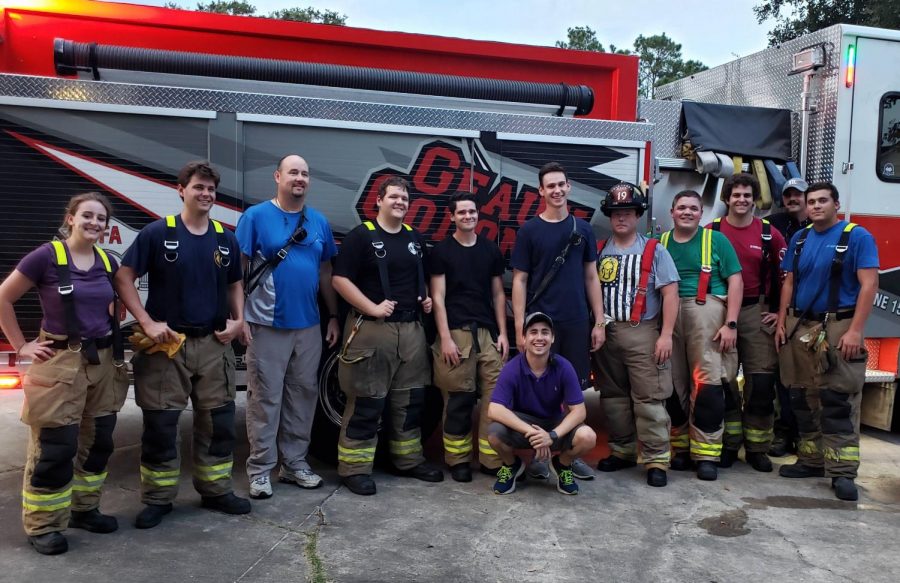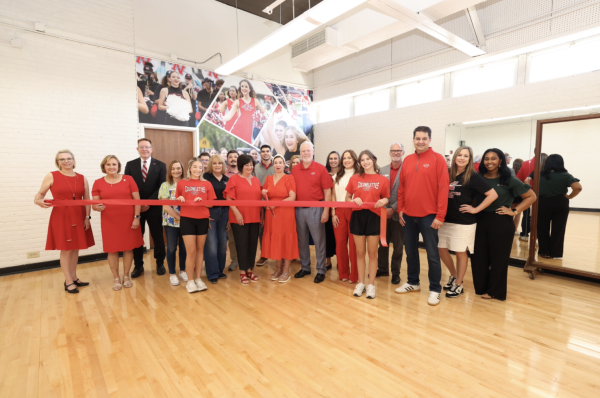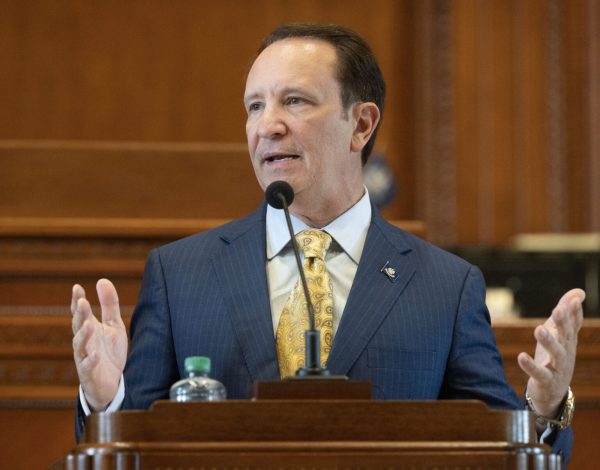Nicholls uses fire drill to show the importance of safety
On Thursday, Sept. 19, 2019, students living in the Brady Residential Complex experienced a realistic fire drill.
The drill was organized by Brian Clausen, director of the office of environmental health and safety.
Clausen said due to the Jeanne Clery Act, fire drills on campus must be announced, and they happen in both the fall and spring semesters.
The purpose of the fire drill is to train students on how to react when an alarm does go off.
Fire drills normally are not as realistic as the one that took place at the Brady Complex.
“If we determine that students have been getting slower, going back in their rooms and just not abiding by the fire alarms, every now and then, we will spring in a realistic-looking drill,” Clausen said.
- The Brady Complex was chosen because the results of the last couple of fire drills showed residents were slow at evacuating. There were also reports of people going back into their rooms during the fire drills.
Clausen said Brady has already had two fires in the past, and the building is at a greater risk because each of the rooms have a kitchen.
The responding firefighters for the drill were all members of the Nicholls Student Firefighter Association.
“I thought it was going to be a great time to involve those students here, highlight what they do, and that there are fellow students helping protect and save lives,” Clausen said.
While the students living in the Brady Complex were able to gain experience on what to do if the fire was real, the firefighters’ a part of the Nicholls Firefighter Association were also able to gain valuable training.
The firefighters responding were able to test what length of fire hose they would need to reach the first floor, how much ladder they would need and if a ladder truck would be able to enter the area.
“It was a very valuable training scenario for us,” Landon Woolridge, a Nicholls student and one of the firefighters present at the drill, said.
For some of the residents at Brady, the drill seemed all too real.
“Me and my roommates thought it was just another fire drill. We all grudgingly walked out of our rooms and out onto the balcony. That’s when we saw smoke had covered the entire complex. People were screaming and running and yelling “fire!” That’s when we realized things were serious,” Macy Trosclair, a resident at the Brady Complex, said.
The drill was intended to show students that they should always react seriously when they hear the fire alarm.
“The drill wasn’t intended to scare anyone; it wasn’t to cause fear in anyone. It was just to put in their minds that, hey, this is real and this can happen; this may not be a drill every single time,” Austin Montero, a Nicholls student and one of the firefighters present at the drill, said.
Clausen said the goal was not to cause panic, so they opted to only use simulated smoke. Clausen also said as soon as the firefighters started doing their drills, he announced that it was only a drill.
Clausen wanted to use the ladder truck from the town of Thibodaux. The ladder truck is the biggest truck in the fleet, and the departments wanted to see if it would be able to reach the buildings.
Clausen plans to involve the students in more safety training, but not necessarily to the extent of the drill at the Brady Complex, that way they know the campus well, if there ever is a real emergency.
The drills also help residential assistants and other residential staff to know how to react in the event of a real fire.
“It’s really important that we actually show them what would happen if there were to be a fire,” Alex Coad, director of residential living, said.









